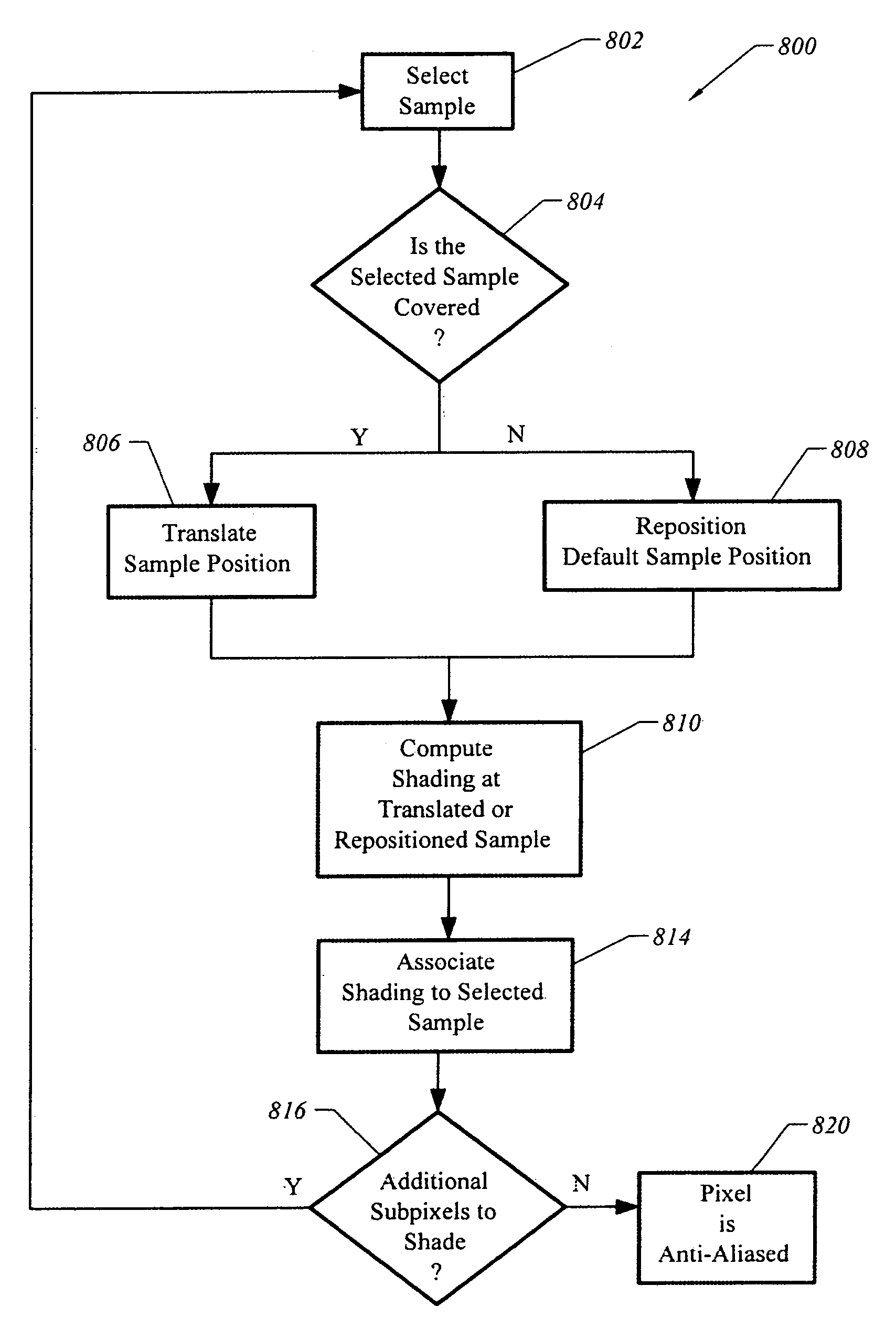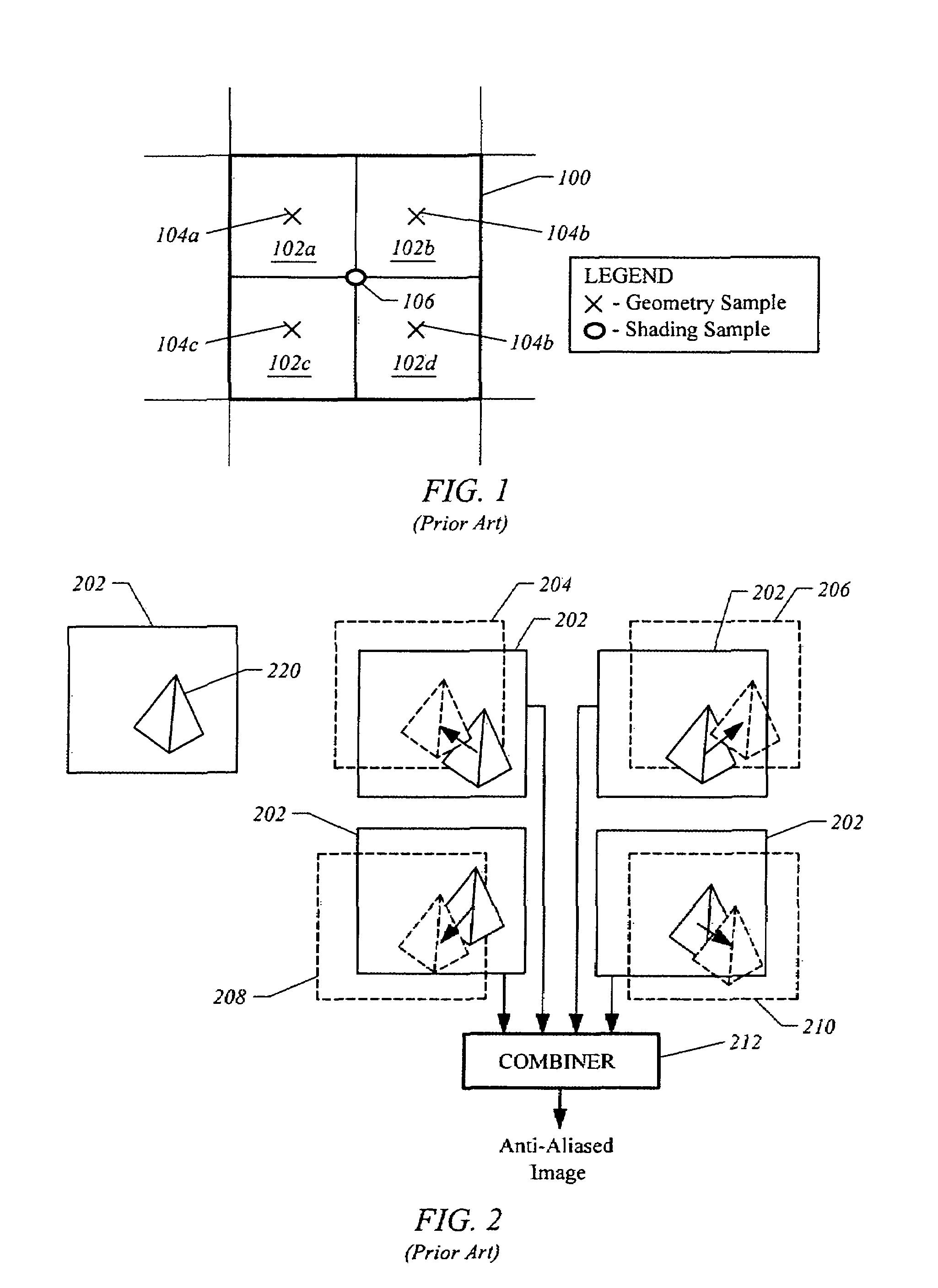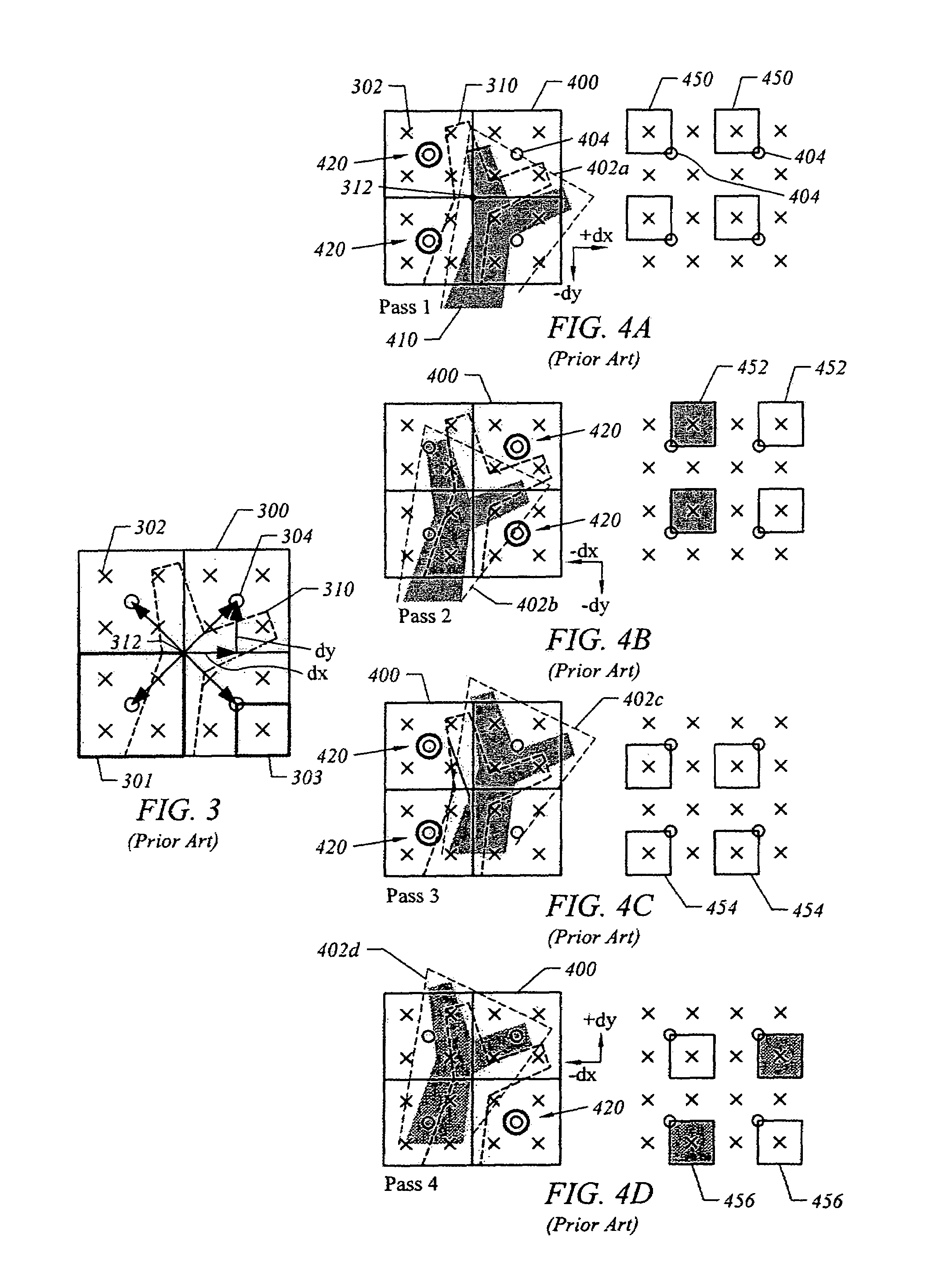System, apparatus and method for subpixel shifting of sample positions to anti-alias computer-generated images
a computer-generated image and subpixel shifting technology, applied in the field of system, apparatus and method for subpixel shifting of sample positions to anti-alias computer-generated images, can solve the problems of reducing frame rate, reducing image quality, and increasing the computational overhead of rendering computer-generated images by a multiplicative amount, so as to achieve the effect of preserving computational resources and reducing the computational overhead of a graphics pipelin
- Summary
- Abstract
- Description
- Claims
- Application Information
AI Technical Summary
Benefits of technology
Problems solved by technology
Method used
Image
Examples
Embodiment Construction
[0033]FIG. 7 is a block diagram illustrating a graphics processor system 700 that includes a subpixel shifter 710 to anti-alias computer-generated images in accordance with a specific embodiment of the present invention. In various embodiments, subpixel shifter 710 translates shading sample positions relative to a computer-generated object (“object”) that is to be rendered as part of frame. In particular, subpixel shifter 710 generates multiple sample positions (i.e., multiple anti-aliasing sample points) at which to sample shading for a pixel to determine anti-aliased texture for a geometry (i.e., a geometric primitive). In accordance with various embodiments, subpixel shifting as used herein, refers generally to shifting a sampling position by less than a size of a pixel rather than shifting an object or a geometry thereof. In some cases, subpixel shifting refers to shifting shading sample positions relative to a frame of reference including both coverage sample positions and the ...
PUM
 Login to View More
Login to View More Abstract
Description
Claims
Application Information
 Login to View More
Login to View More - R&D
- Intellectual Property
- Life Sciences
- Materials
- Tech Scout
- Unparalleled Data Quality
- Higher Quality Content
- 60% Fewer Hallucinations
Browse by: Latest US Patents, China's latest patents, Technical Efficacy Thesaurus, Application Domain, Technology Topic, Popular Technical Reports.
© 2025 PatSnap. All rights reserved.Legal|Privacy policy|Modern Slavery Act Transparency Statement|Sitemap|About US| Contact US: help@patsnap.com



